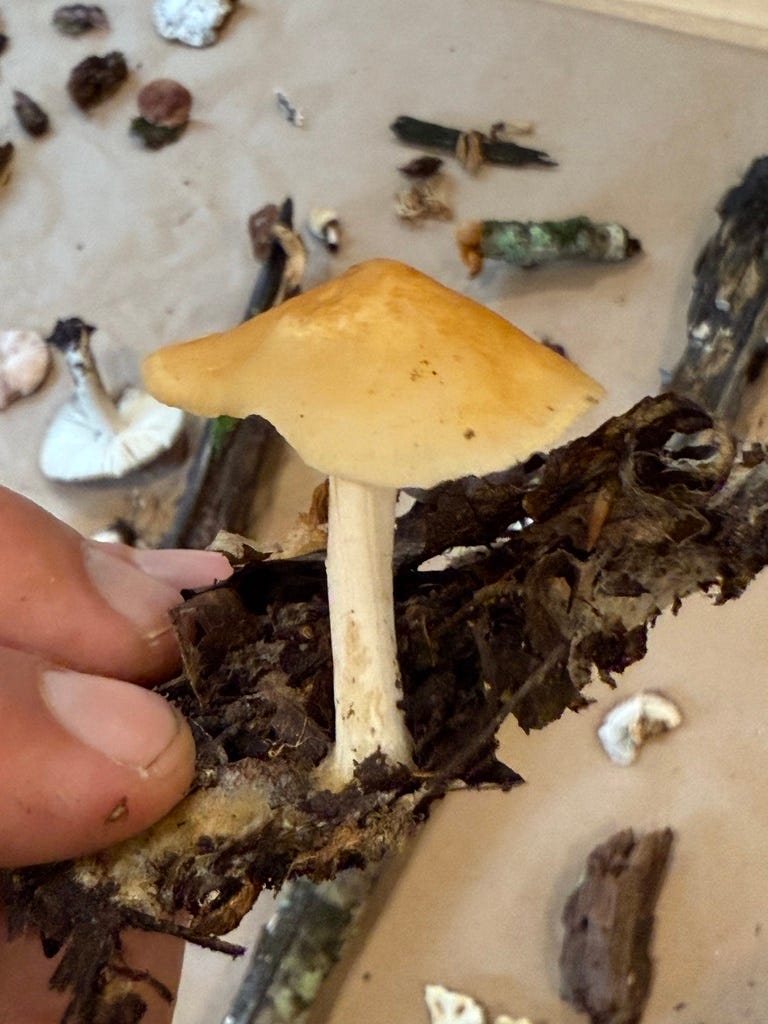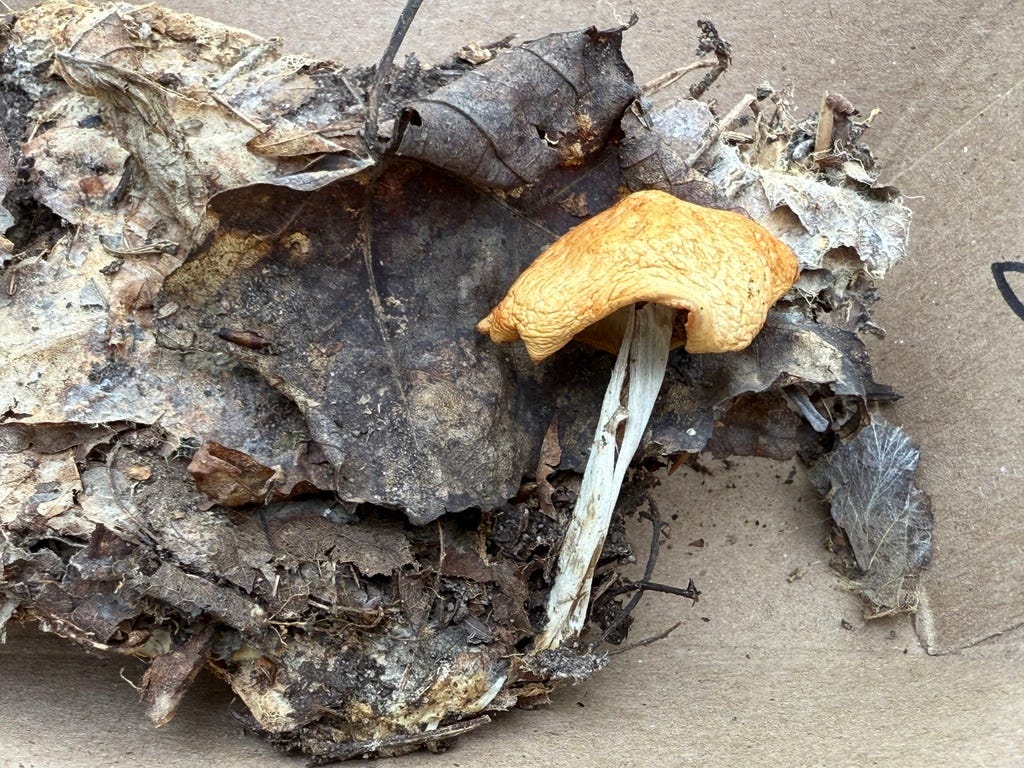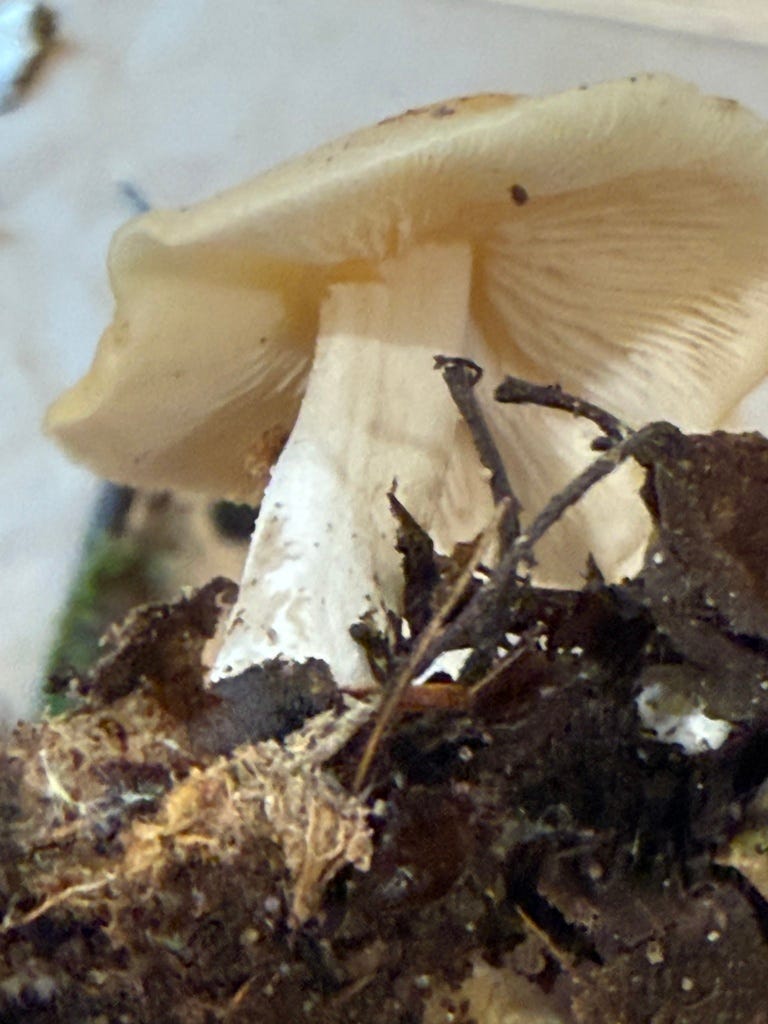
Good evening, friends,
This past weekend we gathered in a hollow of Panther Mountain in Phoenicia, NY for the biannual Friends of Fungi retreat. One of my favorite weekends of the year (despite the ticks, mosquitos, and no-see-ums doing their best this go-round to make me feel otherwise), I always go into the retreat with the hopes of encountering a mushroom I’ve never seen before.
We found a lot of decomposers, and it still seemed a little early in this nook in the mountain for mycorrhizals, but all the recent rain provided plenty of fungal life. Despite this being my ninth time at Menla for Friends of Fungi, we found multiple mushrooms I’d never seen before. Today we’ll focus on the orange-yellow Marasmius (Marasmius strictipes) — one of the mushrooms that was new to me, and one that is unlike most Marasmius you find in the forest.
Fun Facts
Marasmius mushrooms tend to be diminutive in both height and breadth, like the collared parachute (Marasmius rotula) which rises up to 2 centimeters tall, but this mushroom bucks that trend and can grow as high as 10 centimeters (our mushroom was a more modest 4.5centimeters). M. strictipes is also fleshier than most Marasmius, and was originally placed in a different genus entirely (Collybia) because of these dissimilarities.
A unique trait of Marasmius mushrooms is that they can dehydrate, wait for more rain, and then rehydrate to continue to release spores — a trait known as marcescence in the mycological world. The mushroom we found dehydrated well, but the stipe split prior to dehydration so I’m not sure it’s going to rehydrate all too successfully. We’ll see.
The etymology of Marasmius comes from the Greek marasmos which means "withering away" or "wasting away", but is an adage to the ability of mushrooms in the genus to wither and rehydrate. The species epithet, strictipes, comes from the Latin strictus which can mean “rigid” or “tight”, and the suffix -ipes means "foot". I’ve written about Flammulina velutipes and Retiboletus ornatipes, species epithets which mean "velvet foot" and "ornate foot" respectively, and now we have the "stiff foot". A reference to the mushroom’s tough stipe (stem), and a better common name than "orange-yellow Maramius" for what it’s worth.
Ecology
The fungus is saprobic (a decomposer) on leaf litter in hardwood forests east of the Mississippi River. The mushrooms pop up late spring through fall and can grow solitarily or sometimes in clusters. The mushroom cap is orange-yellow in color which can help distinguish it from the similar Marasmius oreades. M. oreades typically fruits in a fairy ring pattern in lawns (multiple mushrooms growing in a circle in the grass), while M. strictipes is found decomposing leaf litter in hardwood forests.
The fungal mycelium actually caked the leaf litter together so thoroughly that it feels like a pressed parchment. Individual leaves aren’t recognizable in the middle of the substrate. There aren’t any specific studies I could find on this fungus, but perhaps it would be cool to see if it could glue together cardboard or other natural fibers to serve as a natural adhesive.

Other Finds
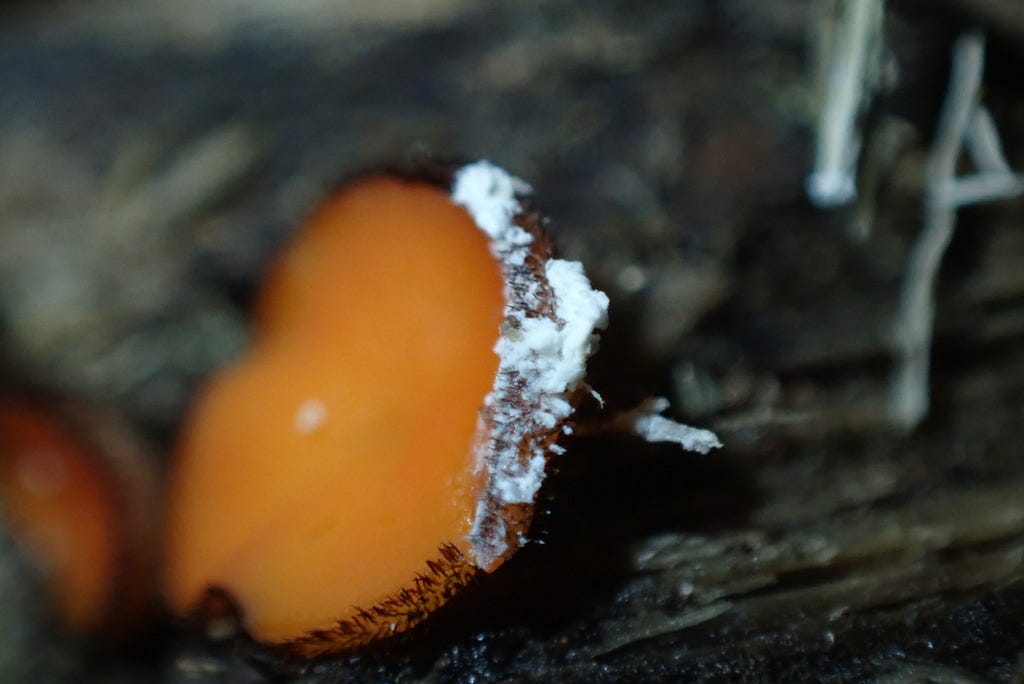
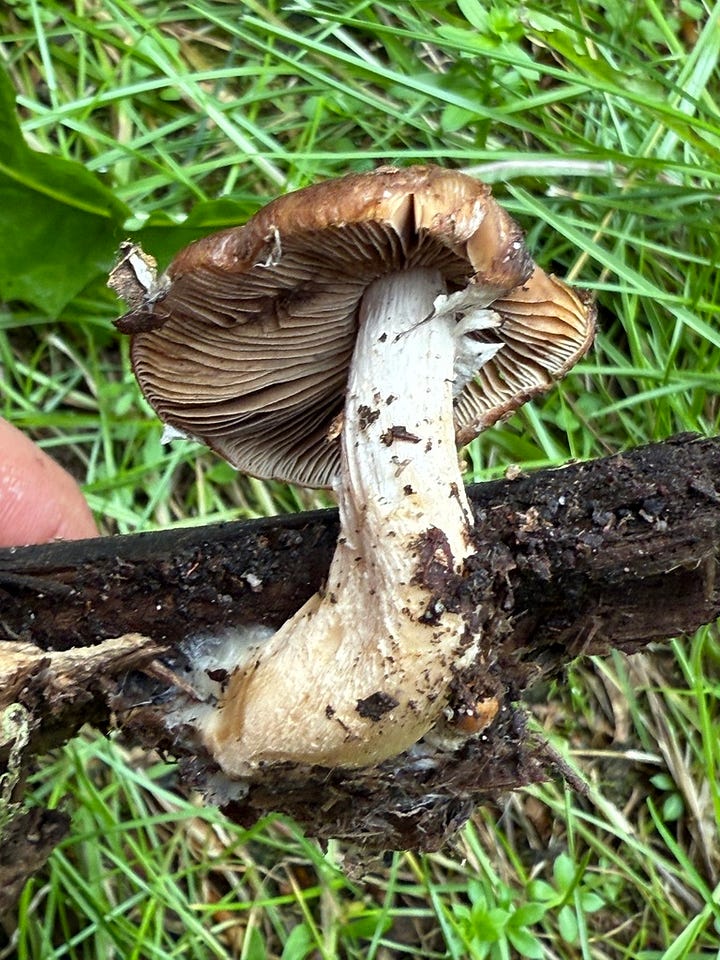

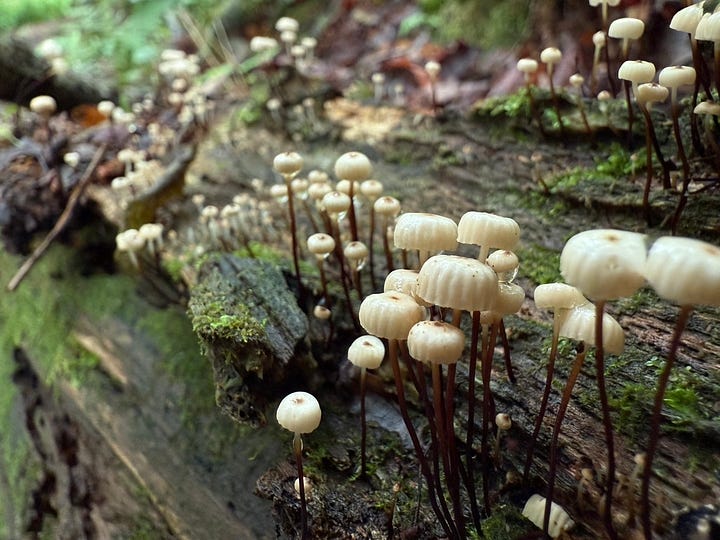
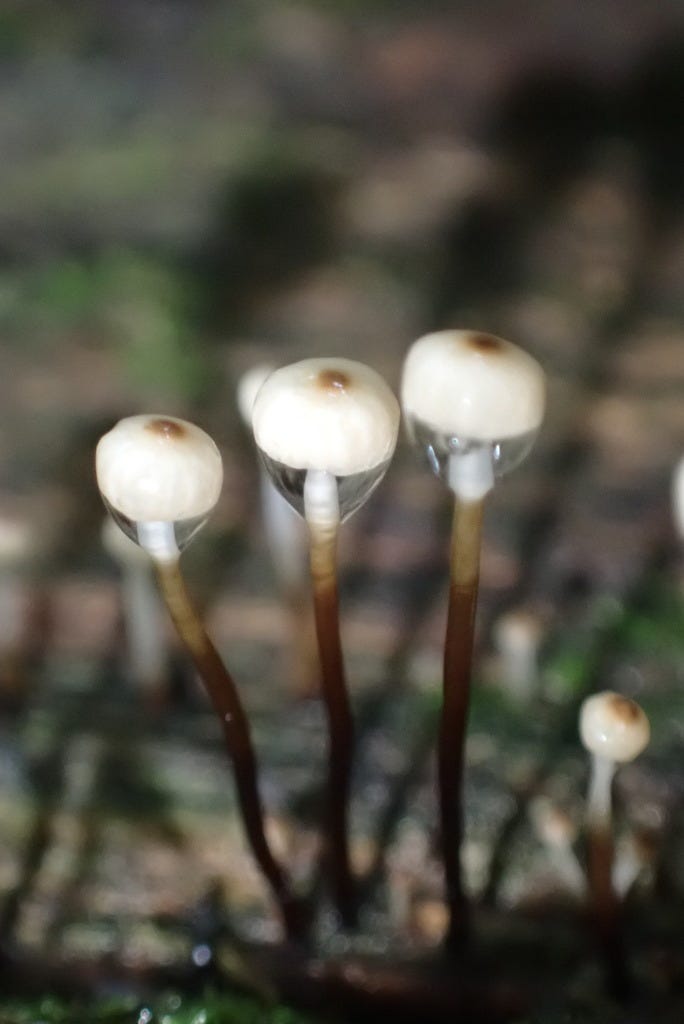
Upcoming
This Friday, 6/20: Summer Solstice Mushroom Walk with the Stamford Land Conservation Trust. 5:30PM at the end of Mill Stream Road in Stamford, CT.
Have a wonderful summer solstice (if you’re north of the equator, of course, a winter solstice if you find yourself south of it). It looks like we will finally have some sunny weekend weather in the northeast,
Aubrey
References
Kuo, M. (2012, July). Marasmius strictipes. Retrieved from the MushroomExpert.Com Web site: http://www.mushroomexpert.com/marasmius_strictipes.html
https://www.inaturalist.org/taxa/351496-Marasmius-strictipes





